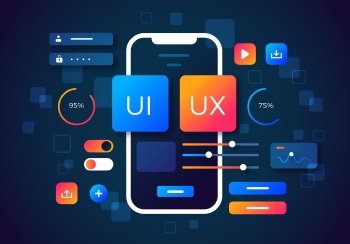
Rao Abrar Ahmad

In today’s digital landscape, user experience (UX) is a critical factor that can determine the success or failure of any product or service. A well-executed UX project enhances user satisfaction and aligns with business goals, driving user engagement and profitability. As someone striving for excellence in UX design, it’s essential to approach your projects with a strategic mindset. Here are 10 expert strategies to ensure the success of your UX project.
The foundation of any successful UX project lies in understanding your users. User-centric research is not just a preliminary step; it’s an ongoing process that should inform every decision you make. Conduct in-depth qualitative and quantitative research to gain insights into your users’ needs, behaviors, and pain points. Techniques such as user interviews, ethnographic studies, surveys, and data analytics will provide a comprehensive understanding of your target audience. Develop detailed personas and user journey maps to ensure that every aspect of the design is tailored to real user needs.
A successful UX project begins with a clear vision of what you want to achieve. Establish specific, measurable, attainable, relevant, and time-bound (SMART) objectives that align with both user needs and business goals. These objectives should guide your design decisions and serve as benchmarks for success. Whether your goal is to increase user engagement, reduce bounce rates, or improve conversion rates, defining clear metrics will allow you to measure the effectiveness of your UX efforts.
UX design is inherently interdisciplinary, requiring collaboration between designers, developers, marketers, product managers, and stakeholders. Fostering a culture of collaboration ensures that all perspectives are considered, leading to more holistic and user-friendly solutions. Regularly scheduled workshops, design sprints, and feedback sessions can facilitate communication and alignment across teams. Encourage a shared understanding of UX principles and best practices to ensure that everyone is working towards the same objectives.
Design is not a linear process; it’s iterative. Adopting an iterative approach allows you to continuously refine and improve your designs based on user feedback and testing. Start with low-fidelity prototypes to quickly validate ideas and gather user feedback. As you move through the design process, progressively increase the fidelity of your prototypes, incorporating insights from usability testing at each stage. This approach not only minimizes risk but also ensures that the final product meets user expectations.
In today’s data-rich environment, making informed decisions based on data is crucial. Use analytics and user testing data to guide your design decisions, rather than relying solely on intuition or assumptions. Tools like heatmaps, A/B testing, and user flow analysis can provide valuable insights into user behavior, highlighting areas for improvement. Ensure that your design decisions are backed by empirical evidence to create a more effective and user-centric product.
A successful UX project is accessible to all users, regardless of their abilities or disabilities. Prioritizing accessibility ensures that your product can be used by a diverse audience, which not only enhances user satisfaction but also broadens your market reach. Adhere to Web Content Accessibility Guidelines (WCAG) to design inclusive experiences that accommodate users with varying needs. Consider factors such as color contrast, keyboard navigation, screen reader compatibility, and cognitive load to create a truly inclusive design.
One of the key principles of UX design is simplicity, and this is particularly important when it comes to navigation. Users should be able to find what they’re looking for quickly and easily. Simplify navigation by implementing clear, intuitive information architecture and user-friendly menus. Use breadcrumbs, search functionality, and well-structured content hierarchies to guide users through the experience. Remember, the easier it is for users to navigate your product, the more likely they are to achieve their goals.
While UX is primarily concerned with functionality and usability, visual design plays a critical role in creating an engaging and aesthetically pleasing experience. High-quality visual design enhances the perceived value of your product and can significantly impact user satisfaction. Invest in a consistent design system that reflects your brand identity and resonates with your target audience. Pay attention to typography, color schemes, imagery, and micro-interactions to create a cohesive and visually appealing experience.
Usability testing is an essential component of any UX project. It provides real-world feedback on how users interact with your product, highlighting potential issues and areas for improvement. Conduct usability testing at various stages of the design process, using both moderated and unmoderated methods. Techniques such as think-aloud testing, remote user testing, and eye-tracking can offer valuable insights into user behavior. The goal is to identify and resolve usability issues before the product is launched, ensuring a smooth and satisfying user experience.
A successful UX project doesn’t end at launch; it’s an ongoing process of refinement and enhancement. Continuously monitor user feedback, analytics, and performance metrics to identify areas for improvement. Stay informed about emerging trends and best practices in UX design, and be prepared to iterate on your designs to keep them relevant and effective. By fostering a culture of continuous improvement, you can ensure that your product evolves in line with user needs and expectations.
Achieving a successful UX project requires expertise, dedication, and a strategic approach. At RF Tech, we specialize in delivering exceptional digital experiences through our comprehensive UX design, web development, and digital marketing services. Whether you're launching a new product or optimizing an existing one, our team of experts is here to help you at every step of the journey. Partner with us to ensure your UX project not only meets but exceeds user expectations and drives business success.
